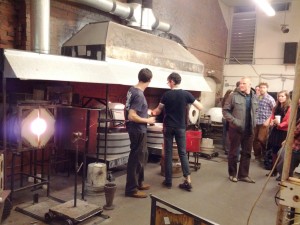I went out on another exploratory trip to Eastern Washington yesterday, checking out three more possible event sites. Ava came along this time, and we had a pleasant day poking around the back country. It was interesting, but as with my last trip it was ultimately inconclusive, and I am already planning a third scouting mission.
The first site was on top of a plateau near an OHV park. The road in is surprisingly good, and there are great little “peekaboo” views out over the wide-open valley as you ascend. When you get to the top the crest drops sharply down the other side, with a spread-out vista of flood-scoured channel lands… It’s a nice spot. The place I was looking for is securely locked away behind miles of barbed wire, though; there’s no way to reach it without crossing private land.
The second place is actually inside an OHV park: there are sand dunes next to a creek in a broad, flat valley, and camping is allowed, so I thought it might be suitable. I didn’t stay long, though; there’s a lot of traffic through the area, there’s no privacy, and the local authorities are trying to discourage party-like activities due to a former excess of drunken yahoo revelry.
Third site was really gorgeous and would be a lovely place for a large festival. It’s a large box canyon hidden away along the Columbia River gorge, basalt cliffs all around, totally private, with a nice easy road in. There are broad spreading grass fields, pocket meadows, low rock outcrops – lots of places to set up tents or stages or sculptures or whatever.
The catch is that there’s a locked gate a mile before the end of the road and a sign forbidding unauthorized vehicles. It’s not a park, but it’s apparently under some kind of natural resource management program, and you can’t just drive in. Bummer! I suspect there might be some set of forms one can fill out to gain individual access for some limited period of time, but it seems unlikely that they’d be willing to unlock the gate for a weekend and let dozens or hundreds of cars come in.
If I can’t find a better spot in time, I’ll use the little box canyon I found two weeks ago. It’s small, and open flames would be a significant problem, but it would otherwise be a good place to start. Still, I have two more sites to check out, and one of them even looks like it has a small dry lakebed….



